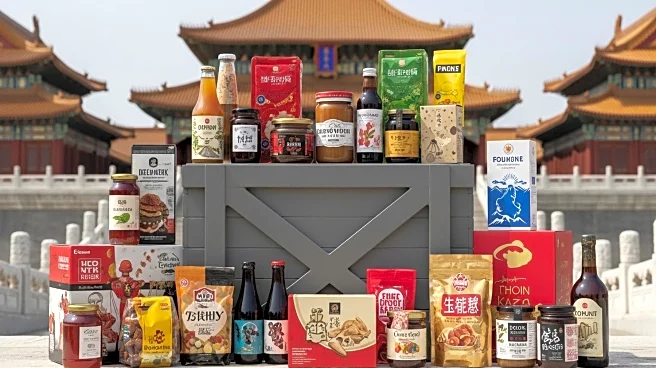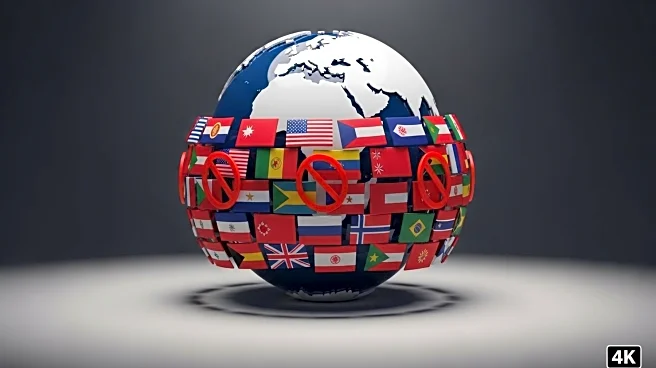What's Happening?
The recent termination of the de minimis tariff exemption by President Trump's administration has led to unexpected fees for consumers purchasing Korean beauty products in the United States. Previously, packages valued under $800 were imported tax-free, but now they are subject to tariffs based on their country of origin or fixed fees ranging from $80 to $200. This change has particularly affected the Korean beauty industry, which has seen significant growth in the U.S. over the past decade. Consumers are experiencing higher prices and potential delays in delivery times as a result of these tariffs.
Why It's Important?
The removal of the de minimis exemption is significant as it disrupts the supply chain for low-value items, including popular Korean beauty products. This change could lead to increased costs for American consumers, particularly impacting low-income and minority groups who rely on affordable imports. The broader economic implications include potential shifts in consumer behavior and market strategies by retailers, who may need to adjust pricing or suspend deliveries to offset increased costs. The Korean beauty industry, which has been thriving in the U.S., may face challenges in maintaining its growth trajectory.
What's Next?
Retailers and consumers are likely to experience continued adjustments as they navigate the new tariff landscape. Some larger retailers may pass on the increased costs to consumers, while smaller brands might halt shipments to the U.S. altogether. The full impact of these changes may not be evident until next year, as businesses and consumers adapt to the new tariff regulations. Additionally, ongoing geopolitical uncertainties could further influence trade policies and pricing strategies in the beauty industry.
Beyond the Headlines
The end of the de minimis exemption raises questions about the ethical and economic implications of trade policies that disproportionately affect certain consumer groups. It also highlights the potential for long-term shifts in international trade relations and consumer access to global products. As businesses and consumers adjust, there may be increased advocacy for more transparent pricing and tariff information to help consumers make informed purchasing decisions.












